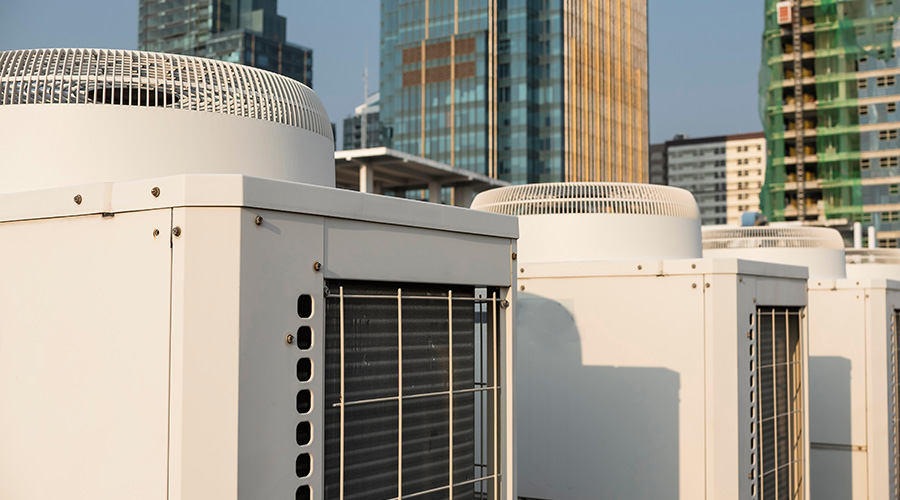Satisfaction Guaranteed?
Involving occupants in green design can create a satisfied, productive workforce
By Lacey Muszynski, Assistant Editor
One widely cited benefit of green design is occupant satisfaction. That makes sense. With its focus on things like improving indoor air quality and providing daylight to occupants, green design promises an array of benefits to workers.
But is it possible for facility executives to ensure employee satisfaction after they move into a new green space? There’s no way to be 100 percent sure, but there are ways to hedge your bets. Involving occupants from the beginning of the design process, properly educating them on their new green space, and gathering and following up on feedback are vital to occupant satisfaction.
Back to the Drawing Board
With a majority of an organization’s budget typically spent on wages, keeping occupants satisfied and productive is an important investment, says Charles Crain, leader, workplace studio of SmithGroup.
The best way to ensure that occupants are happy after moving into a new green space is to involve them as much as possible before the space is built or renovated. This may be easier in green renovations, but can be done in new construction projects as well.
Involving facility occupants in the design of a green interior space hasn’t been standard practice, says Cathy Higgins, program director with the New Buildings Institute. “It’s becoming more commonplace recently with the advent of integrated processes,” she says.
The move to involve occupants in green design reflects changing workforce demographics. “Typically,” says Vicki Simons, senior business development manager with BHDP Architecture, “the green initiative is driven by someone in leadership. But recently, especially with generations X and Y in the workforce, it’s more of a grassroots effort driven by employees.”
Occupants whose input is valued in the design process will usually feel more positive about their work environment, says Leigh Stringer, vice president, HOK. “Creativity is king when you’re greening a building,” she says. “Occupants may have imaginative ideas because they’re seeing green all around them: on television shows, in the news and on the Internet. We encourage companies to see their employees as a resource and say, ‘How can we help implement their green ideas?’”
To collect information from occupants, organizations can create a committee or team of employees that works directly with the facility executive, design team and owners. “It’s nice to have a very democratic cross section of the organization’s occupants,” says Crain.
Representatives should come from various backgrounds, company divisions and workgroups. For example, some employees may prefer as much natural daylighting as possible, but some computer-intensive workers may prefer a dimmer work environment, says Higgins.
If a green renovation is planned, a pre-occupancy evaluation is an option. Theoretically, this is the most democratic way to gather information from occupants prior to the design process because Internet-based survey tools allow every occupant to participate. It also allows for a baseline standard to be established, an important step in gauging the success of the renovation when combined with a post-occupancy evaluation.
Training Day
Once occupants have moved into their green spaces, whether new construction or renovation, it’s important to raise awareness about the new green features of the space. Even if it’s a renovation project, one of the best ways to do so is to celebrate the opening of the space and make it a big hoopla, says Stringer. A big event may replace any trepidation or apprehension among occupants with excitement about the changes.
Even if a committee of occupants is involved in the planning and design stage, post-occupancy training sessions are vital to the success of the new space and its efficiency benefits. “It’s critical that organizations create some kind of internal green teams,” says Higgins. In her experience, groups of occupants will sometimes meet monthly. At these meetings, new green procedures will be introduced. Recycling programs, waste management, daylighting system features and remote work programs can all be explained and introduced to occupants gradually to allow time to adjust to new habits before implementing additional steps.
Some green programs may be more difficult to adjust to than others. If an organization is concerned about minimizing its environmental footprint, remote work programs may be implemented. That can be a big adjustment for occupants who are used to being around coworkers, supplies and tools; it could also be a jarring experience for supervisors. Complicated programs like this should be implemented gradually.
Physical differences in the facility should be explained as soon after occupancy as possible. New ergonomic workstations, operable window shades, lighting systems and any personal HVAC controls need to be explained from the beginning for occupants to feel comfortable in their new surroundings.
Keeping Occupants Green
Post-occupancy evaluations can help facility executives and owners gauge the level of satisfaction with the new green space. Administering the survey six months after occupancy is typical. That’s enough time for occupants to get used to new features and discover minor problems that weren’t thought of ahead of time.
Six months is also about the amount of time it takes occupants to sneak back into non-green behavior, says Stinger. That’s why it’s important for an organization to conduct a survey to find out how occupants are using the green features. If occupants have become lax in recycling or are leaving overhead lights on 24/7, the organization won’t see the benefits typically associated with green features.
Post-occupancy evaluations for green spaces are similar to those for non-green spaces, says Simons. Questions focus on occupant satisfaction in a number of areas: lighting, acoustics, temperature, IAQ, security, aesthetics and ease of use. In a green space, those topics can address specific green features. For example, in a facility with daylight sensors, “Is the light level adequate throughout the day?” may be an appropriate question.
Organizations should view occupant satisfaction surveys as a way of commissioning employees, says Stringer. “Commissioning is ongoing for a facility because facilities change,” she says. “Organizations change too. We should be fine-tuning the people every year as well as the facility.”
If an organization conducts a post-occupancy evaluation, they should be sure they are prepared for the results. Often times, organizations perceive a great amount of risk involved with receiving feedback, Higgins says. “You just built this space and spent all this money. And now you get feedback and it’s going to cost more money to address the issues.”
However, conducting a survey and failing to follow up on the responses would defeat the purpose of the whole green design process, and may eventually be a drag on a company’s bottom line if occupants become frustrated that their needs aren’t being addressed. Green, energy-saving features and procedures in concert with healthy, happy occupants ensure an organization’s employees remain a productive asset.
Another Reason To Go Green
Safeguarding the health of occupants is at the top of facility executives’ priority lists. Green design — especially applied to interiors — shares the same tenet. And as the list of research studies and surveys linking occupant health and happiness to productivity grows, more and more companies are taking notice. “A company’s business is based on humans,” says Jack Davis, program manager with BetterBricks. “Once an organization realizes that green factors track against less employee sick days, that becomes a huge incentive to go green.”
|
Related Topics:











